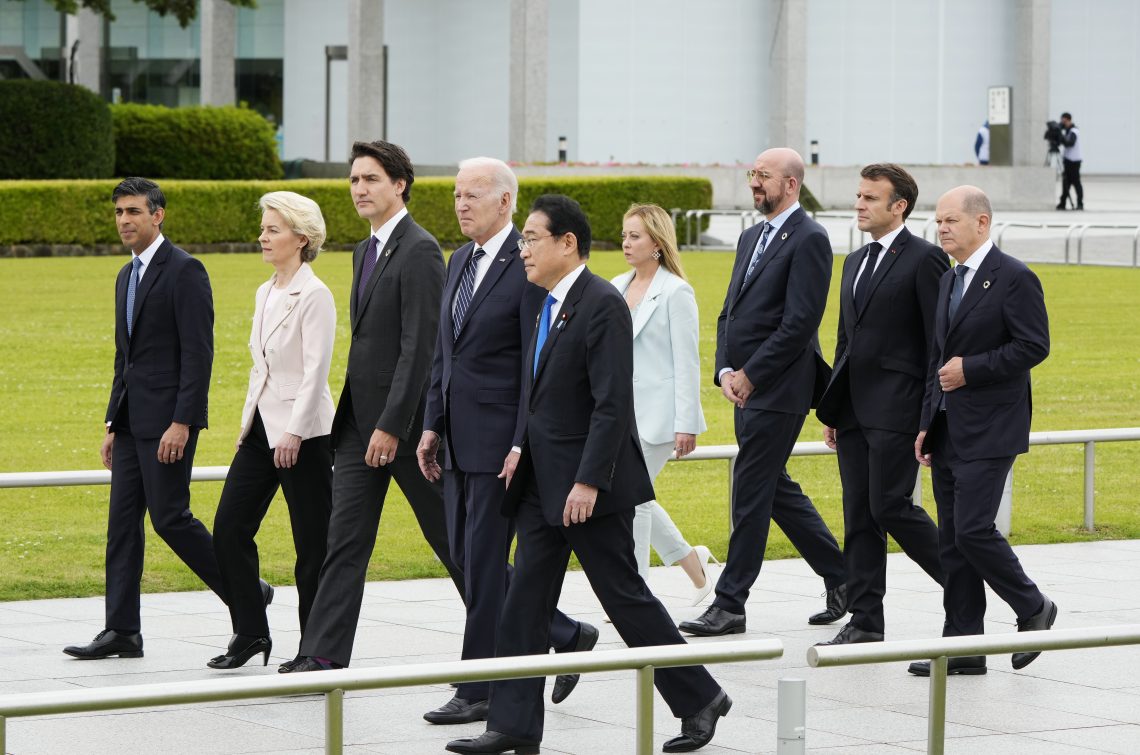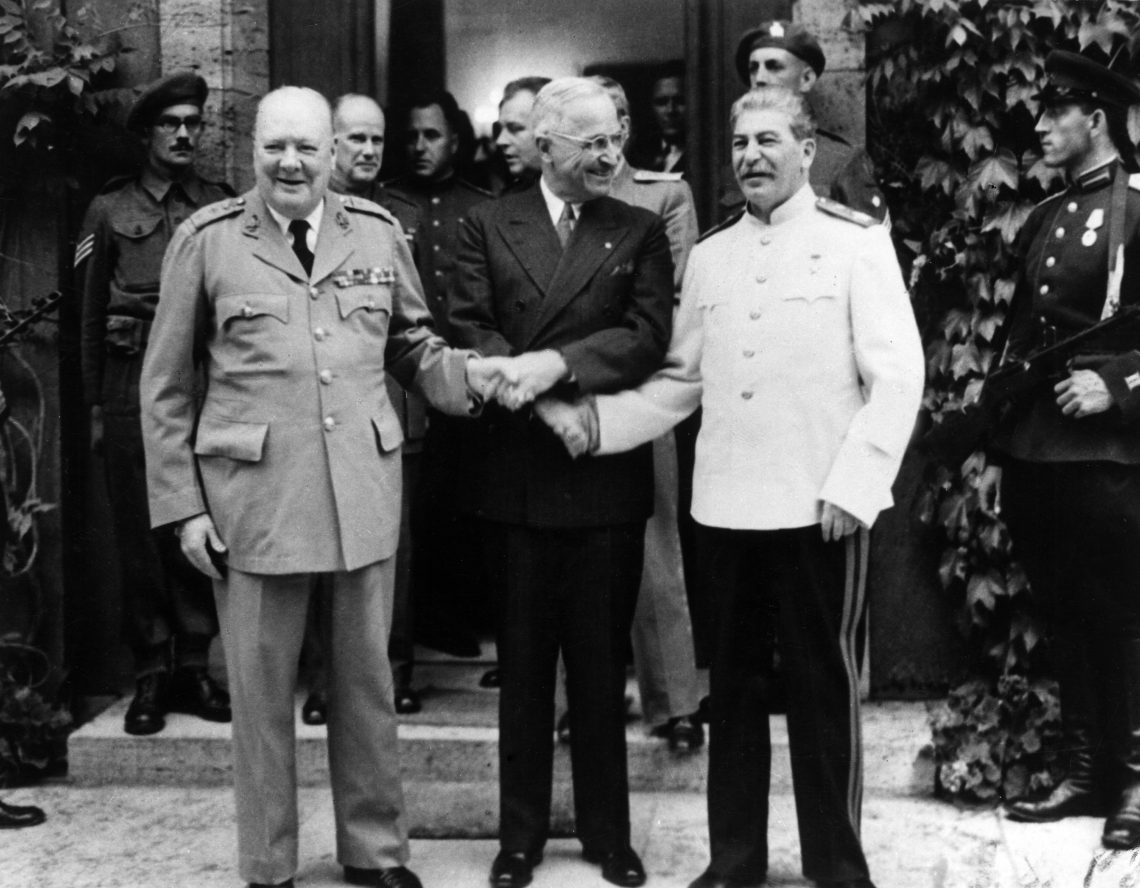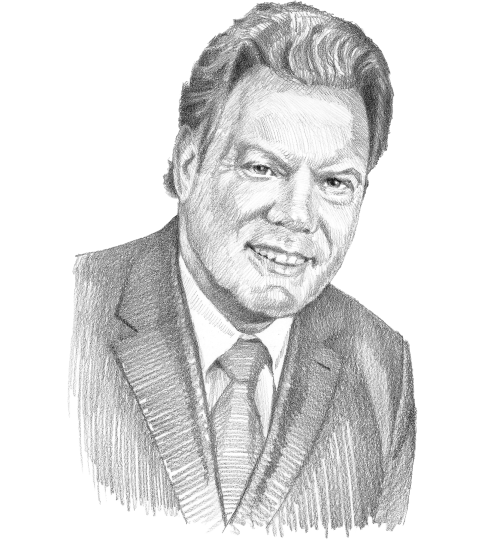Prospects for a multipolar world order
The post-1945 order as we know it is coming to an end. While the U.S. remains dominant, other powers are vying for a multipolar future.

In a nutshell
- Emerging global power centers have strengths in different domains
- China, India and the EU face significant internal and external challenges
- American dominance will only be undermined from within
Multipolarity has been with us since the end of the Roman Empire. Multipolarity is like unipolarity, an apparent oxymoron. Poles come in pairs – opposed, but equivalent.
Internationally, there is today growing opposition but there is not much equivalence. The crucial question is not about multipolarity per se, but rather: Can a single international order be legally binding for every state? The alternative to world order is not multipolarity, but a Hobbesian system defined by the aggression of the strong and the ruthless subjugation of the weak. Multipolarity suggests that there are now multiple contenders capable of shaping the world order, fostering legitimacy and consensus and maintaining that order in the face of disruption or defiance.
Let’s take a closer look at different power brokers in a potential multipolar world order.
The United States
The United States will remain the dominant world power. Its defense budget is three times that of China and eight times that of Russia. Its economic, financial and cultural influence, coupled with its innovative prowess, is unrivaled. The U.S. leads all other nations in Nobel Prizes, with 406 won compared to the United Kingdom’s 138 and Germany’s 114 (China, with 9 trails South Africa’s 11). In sectors from computing and chip design to software, space exploration, language recognition and biochemistry, the U.S. sets the global pace. English serves as the world’s lingua franca, and the American dollar, which underpins global trade, affords the U.S. nearly unlimited seigniorage.
The Anglo-Saxon world – the U.S., the UK, Canada, Australia and New Zealand – is tightly interconnected. Collectively, these five nations account for 35 percent of global output and almost 50 percent of worldwide military expenditure. They cooperate closely in intelligence gathering, through the Five Eyes alliance. As external challenges grow, the cohesion of the Anglo-Saxon world is likely to strengthen, as illustrated by developments such as the AUKUS alliance.
China
China has successfully mirrored Japan’s economic and technological rise. Sometimes perceived as less tainted by colonial history than the West, it presents itself as an appealing partner for developing countries. China’s advantage is its pragmatism – showing little regard for human rights, accountable governance or democratic standards.
China boasts power projection capabilities that could threaten American strategic interests in the Pacific, but it is not positioned to seriously threaten the U.S. Beijing is intensifying its nuclear deterrence efforts, posing intricate challenges for future strategic arms control and disarmament.
China’s rise is not likely to follow a linear path. Economists no longer ask when China might overtake the U.S., but when the Chinese economy is likely to peak. While Chinese research and development (R&D) capabilities are impressive, they remain a distant second to their American counterparts. China also grapples with substantial social problems, environmental degradation, water scarcity and a declining demographic.
An aging population implies a shortage of labor, innovative minds and soldiers. The Chinese language and script have not spread outside the country’s borders, nor do the doctrines of “Socialism with Chinese Characteristics.” China faces a manpower deficit, while the U.S. continues to attract immigrants; reshoring, accordingly, makes more sense for America than for China.
Global trade resembles a natural water table: if it meets a barrier, it simply tends to seep through.
China’s R&D is impressive, but it is uncertain whether the momentum can be sustained. Its acquisition of strategic global economic assets (like the German-founded Kuka manufacturer and the Swiss Syngenta) is running into resistance. Beijing prioritizes power over profit, control over competition and stability over innovation. These factors could lead to a significant slowdown in economic indicators.
While Beijing may seek increased global influence and even adjustments to the current system, it has little interest in upending the basic rules of the prevailing world order.
India
As the world’s most populous country, India’s growth rate sits at around 6 percent. This implies almost a doubling of its gross domestic product over the next decade, potentially increasing from $3.2 trillion to $6.4 trillion – a figure still significantly behind where the U.S. (at $35-40 trillion) or China (at $25 trillion) should be by 2030. India’s primary vulnerability lies in its energy resource deficit. Climate change will precipitate conditions there that approach the limits of human endurance. Social gaps between rich and poor are rife, exacerbated by persistent caste divisions. The nation’s education system remains inadequate for its global leadership aspirations.
India’s soft power is weak. None of its many languages hold international sway, and its literature and media exert relatively little influence beyond its borders. India has found success in services, particularly in skilled sectors. Religiously, Hinduism is a national (if not nationalist) religion, increasingly intolerant of Islam. Like China, India faces social tension and environmental degradation. Its main social issue is not a labor shortage but a lack of sufficient job creation. The rupee has lost over 50 percent of its value compared to the U.S. dollar, and direct foreign investment in India was $85 billion in 2022, a figure dwarfed by China’s $500 billion-plus.
India initiated the Non-Aligned Movement in the 1950s and historically leaned toward the Soviet Union, which supported it over Kashmir and during the war that led to the creation of Bangladesh. The Indian armed forces’ hardware is 80 percent Russian-made, and the country still depends on Moscow for spare parts, training and upgrades. Today, India buys 45 percent of its defense equipment from Russia and 28 percent from the U.S. Without a robust domestic defense industry, India will not become a powerbroker in its own right.
Despite India proving itself as a stable democracy, with peaceful transfers of power and fluctuating political parties, the reality today is less inspiring. Corruption is widespread among politicians, votes are frequently bought and election rigging is not uncommon.
As an independent power, India is far from matching China, let alone the U.S., and will struggle to wield global influence. It pursues a policy grounded in pragmatic self-interest. Russia’s involvement in Ukraine translates into cheap oil for India and opportunities to exploit loopholes in Western sanctions.
Russia
Russia is underperforming economically and in R&D, and faces persistent problems with quality control. It produces some remarkable scientists but remains inept in turning innovation into profitable businesses. War against Ukraine will accelerate the imbalance between military strength and civilian weaknesses.
Since 1990, Russia has earned seven Nobel Prizes (two for peace, four for physics and one for economics); during the same period, the U.S. secured 206, the UK 46, and Germany 25. Russia’s international reputation has suffered significantly since its military aggression against Ukraine. Yet – as a country rich in natural resources with an intimidating nuclear potential, a global reach and a readiness to support dictators in exchange for valuable assets – Russia still cannot be discounted. Any future global order will need the support, or at least the acquiescence, of both Russia and China.
Russia’s soft power is weaker than China’s, and its political system is plagued by corruption. Internal stability is shaky and propped up only with increasing repression. Its language, too, is spoken by relatively few non-Russians. The appeal of the Soviet-era Marxist ideology and its industrialization model once seemed attractive to some developing nations. Today’s cultivation of the “Russian World” is unlikely to inspire many outside the country.
Read more by Rudolf G. Adam
Beyond Russia’s war against Ukraine
The European Union
The EU has enormous soft power. Economically and in terms of R&D, it performs impressively. It is good at peace, but abysmal at war. The EU lacks military capabilities and strategic purpose.
It has managed to maintain a consolidated stance vis-a-vis Russia, but internal fractures could lead to divisions. The EU has so far failed to find a coherent answer to the risks involved in trade with China. Germany, for instance, derives 10 percent of its national income from Chinese sources; Spain and Italy, less than 2 percent. The recent flurry of European politicians visiting Beijing highlighted disconcerting inconsistencies.
To become a pole in its own right, the EU must tackle three problems:
First, European security requires the participation of Norway (which controls access to the Atlantic), the UK (the strongest military power) and Turkey (which controls the Bosporus) — all of which are non-EU countries.
Second, the EU cannot collectively provide what its members are unwilling to offer individually. It has no way of being stronger than the combined strength of its members. If the 27 member nations cannot agree on support for Ukraine, how can they agree on common military actions?
Finally, without a unifying leadership, there will be no strategic autonomy.
At the same time, the war against Ukraine has made NATO stronger than ever. Countries along the Pacific Rim are aligning more closely with the Atlantic alliance, while European countries are being drawn into the Pacific theater.
The Arab world
The Arab world has considerable financial clout, controlling oil markets and having a significant presence in natural gas. Despite flexing its muscles on the international stage, its influence remains relatively weak, as do its internal structures. Its power projection capabilities are nearly nonexistent. The region struggles to resolve persistent conflicts, especially the Israeli-Palestinian issue. In terms of R&D, soft power, scientific innovation, industrial production and effective governance, the Arab world lags behind, lacking a single democracy. All Arab countries together have earned 13 Nobel Prizes, the same number as Israel alone (eight of these were Peace Prizes, and four were awarded to scientists working outside their native countries).
Africa
Africa could emerge as an independent pole, provided it can accelerate its development and avoid the trap where population growth outstrips economic growth and the provision of educational facilities. This gap often results in growing discontent among impoverished, underqualified young people. As long as Africa continues to struggle with internal unrest and is unable to give substance to the concept of an African Union, it will not play a significant global role. Africa is weak in terms of soft power. Grievances over a past marked by slavery and colonialism too often overshadow the quest for an independent, prosperous, and distinctive African future.
Japan
Japan is economically a giant and a dwarf in hard power. Japanese culture is sophisticated, but in many respects can be inaccessible to foreigners. Japan’s development assistance is small (around 0.3 percent of gross national income), limiting its leverage in developing countries. A more assertive China is likely to make Japan reconsider its traditional reluctance toward military spending. If doubts grow regarding the reliability of the American nuclear umbrella, Japan might consider becoming a nuclear power itself, but it will probably maintain a passive stance in world affairs.

An international community?
Russia’s war against Ukraine is said to have united the world. On March 2, 2022, the United Nations General Assembly voted 141 to 5 to condemn the Russian aggression; another vote on October 12 came in at 143 to 5 in favor of condemning Moscow’s claim to four Ukrainian provinces. Most telling, however, were the 35 abstentions – which included China, India and South Africa, and overall represent more than 50 percent of mankind, 30 percent of global output and 22 percent of global military spending.
These fence-sitters were driven more by “sacred self-interest” than considerations of a new world order. American proclamations casting the Ukrainian conflict in terms of autocracy versus democracy, or evil versus good, ring hollow when Washington is simultaneously supporting allies like Riyadh. (Framing the conflict as a blatant attempt at neocolonialism versus a nation struggling to preserve its hard-won independence might have a greater impact.) Remaining neutral means being courted by both parties in the conflict. Once a decision is made to side with one, commitments are made that are hard to break. In times of uncertainty, it is often wiser to avoid hasty entanglements. The present conflict has clarified the challenges inherent in ideas of a cohesive, internationally led community.
Scenarios
Presently, the world is close to unipolar in military capabilities, oligopolar in terms of R&D, and multipolar in economics; it is dispersed on transnational issues and generally still bears the imprint of European culture and values.
The dominance of the U.S. can be undermined only from within due to internal dysfunctionality, such as a financial default or paralysis caused by constitutional turmoil. The recurrent crises over debt ceilings or the 2021 riot on the U.S. Capitol building highlight these internal weaknesses. No other contender can match the American combination of soft and hard power. The U.S. will only face a serious problem if two of the other powers were to jointly confront it.
The idea of decoupling is also somewhat exaggerated. At its May 2023 summit in Hiroshima, Japan, the G7 rejected the concept. Indeed, whenever the West imposes trade restrictions, there are sufficient loopholes to obtain necessary goods through informal channels. Global trade resembles a natural water table: if it meets a barrier, it simply tends to seep through.
U.S.-China trade rose from $635 billion in 2017 to $695 billion in 2022 – an increase of 9.5 percent. The share of U.S. exports in this trade changed only minimally, from 80 percent to 78 percent. China remains heavily dependent on imports of energy and metal ores (explaining why trade with Australia has picked up significantly). A slowdown in global trade patterns does not constitute decoupling.
The major questions are over the future of India and the EU. Both are impeded by internal weaknesses. Russia’s dilemma of being a military giant and an economic dwarf will become more acute the longer it wages war against Ukraine. Other world regions will pursue their own national interests opportunistically, without concerning themselves too much about the world order in which they must navigate.
The universality of European values can no longer be taken for granted. The West will have to open itself to concepts of order different from those enshrined in the institutions created in 1945. These must be adapted and modified to take into account changing realities. The fundamental question is: Will that change be achieved through gradual and peaceful change? Or will it trigger another global conflict?









